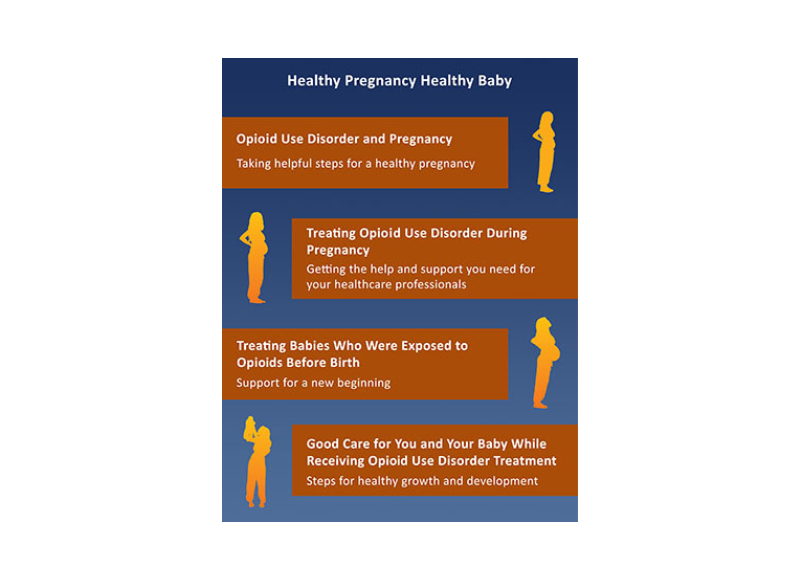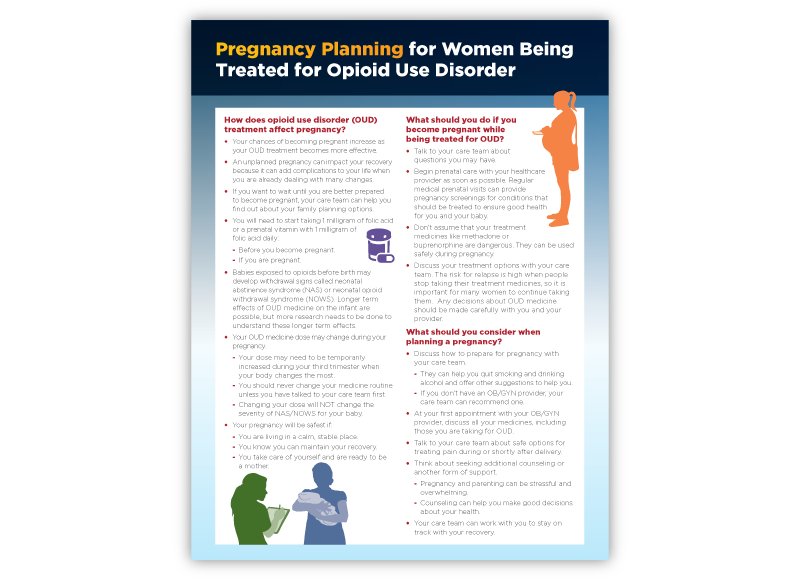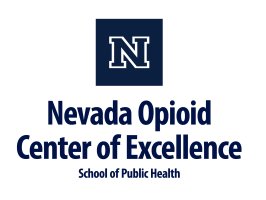
Neonatal Abstinence Syndrome (NAS) occurs when newborns experience withdrawal symptoms due to exposure to opioids in the womb, leading to complications like low birth weight and feeding difficulties. Addressing opioid use in pregnancy is crucial for preventing NAS and ensuring healthier outcomes. Below are key resources and information, including the CDC’s overview of NAS, SAMHSA’s clinical guidance, clinical recommendations from the American Academy of Pediatrics, research from NIDA, and local support services. These resources provide comprehensive support for managing and preventing NAS.
Neonatal Abstinence Syndrome Resources
Websites & Resources
Neonatal Opioid Withdrawal Syndrome
This website, from the Cleveland Clinic, provides comprehensive information on Neonatal Opioid Withdrawal Syndrome (formerly Neonatal Abstinence Syndrome), covering its causes, symptoms, diagnosis, treatment, prevention, and outlook.
Tools
A Collaborative Approach to the Treatment of Pregnant Women with Opioid Use Disorders
This SAMHSA manual offers best practices to states, tribes, and local communities on collaborative treatment approaches for pregnant women living with opioid use disorders, and the risks and benefits associated with medication-assisted treatment.
Novel Technologies for Infants With Neonatal Opioid Withdrawal Syndrome
This article describes innovative technologies being developed to help infants with Neonatal Opioid Withdrawal Syndrome (NOWS), a condition affecting newborns exposed to opioids in utero. Two start-up companies, supported by the NIH HEAL Initiative, have created devices aimed at alleviating withdrawal symptoms in these infants: a vibrating bassinet pad and an ear-worn neurostimulation device. These devices have recently obtained FDA Breakthrough Device status, indicating a promising future for improved treatment options for NOWS.
Clinical Guidance for Treating Pregnant and Parenting Women With Opioid Use Disorder and Their Infants
This Clinical Guide provides comprehensive, national guidance for optimal management of pregnant and parenting women with opioid use disorder and their infants. The Clinical Guide helps healthcare professionals and patients determine the most clinically appropriate action for a particular situation and informs individualized treatment decisions.
Neonatal Abstinence Syndrome Family Guide / Toolkit (NAS)
The Pennsylvania Department of Health in partnership with the Northwestern Pennsylvania Neonatal Abstinence Syndrome Coalition and the Ohio Perinatal Quality Collaborative have created the NAS Family Guide Toolkit to help educate families and individuals about NAS, treatment options, and other supports. Neonatal Abstinence Syndrome (NAS) is a group of withdrawal symptoms in newborns that show up after being exposed to medications or substances, most often opioids, benzodiazepines and/or barbiturates during pregnancy.
Improving the Assessment of Neonatal Abstinence Syndrome (NAS)
Chin Foo, C. A., Dansereau, L. M., Hawes, K., Oliveira, E. L., & Lester, B. M. (2021). Improving the Assessment of Neonatal Abstinence Syndrome (NAS). Children (Basel, Switzerland), 8(8), 685.
An Overview of Clinical Tools Used to Assess Neonatal Abstinence Syndrome
Orlando S. (2014). An overview of clinical tools used to assess neonatal abstinence syndrome. The Journal of perinatal & neonatal nursing, 28(3), 212–219.
Posters & Infographics

Healthy Pregnancy Healthy Baby Fact Sheets
This series of four fact sheets emphasizes the importance of continuing a mother's treatment for opioid use disorder (OUD) throughout pregnancy. The series includes information on OUD and pregnancy, OUD treatment, neonatal abstinence syndrome, and considerations to address before hospital discharge.
Download the Factsheets

Pregnancy Planning for Women Treated for Opioid Use Disorder
This fact sheet is for women who are pregnant or of childbearing age with an opioid use disorder.
View the SAMHSA Fact Sheet
Publications
Substance Use in Women Research Report: Substance Use While Pregnant and Breastfeeding
NIDA. 2024, January 18. Substance Use While Pregnant and Breastfeeding. Retrieved from https://nida.nih.gov/publications/research-reports/substance-use-in-women/substance-use-while-pregnant-breastfeeding on 2024, July 8
Neonatal Abstinence Syndrome
Jansson, L. M., & Patrick, S. W. (2019). Neonatal Abstinence Syndrome. Pediatric clinics of North America, 66(2), 353–367. https://doi.org/10.1016/j.pcl.2018.12.006
Neonatal Abstinence Syndrome
Anbalagan S, Falkowitz DM, Mendez MD. Neonatal Abstinence Syndrome. [Updated 2024 Apr 1]. In: StatPearls [Internet]. Treasure Island (FL): StatPearls Publishing; 2024 Jan-. Available from: https://www.ncbi.nlm.nih.gov/books/NBK551498/
Reference Guide for Labor and Delivery Complicated By Substance Use
(Revised April 2021) Substance misuse, dependency, and substance use disorders (SUDs), including opioid use disorder (OUD), are prevalent among Nevada adult populations, including among individuals of reproductive age. Subsequently, OUD also occurs during pregnancy at an alarming rate with far reaching effects on both the parent and infant. SUD is a primary chronic disease similar to diabetes and hypertension, not a moral failure or character weakness, and should be treated as such by the medical professionals who care for pregnant patients and their infants. Currently, pregnant patients with SUD who present to Labor & Delivery (L&D) units, may receive significant variation in services. These differences include identification and treatment of SUD, identification and treatment for the infant(s), reproductive planning, and care coordination. Practice variance without the use of common generally accepted expert guidelines may potentially lead to parental and/or neonatal complications before, during, and/or after delivery. This reference guide aims to address some of these variances and provide a resource with best practices, guidelines, and protocols for medical professionals involved in the care of pregnant patients with OUD who are admitted to L&D units for delivery and their infants up until discharge.
Reference Guide for Reproductive Health Complicated by Substance Use
(Revised April 2021) Substance misuse, dependency, and substance use disorders (SUDs), including opioid use disorders (OUDs) are common among Nevada adult populations. These issues are also occurring during pregnancy at an alarming rate with far reaching effects on both mother and infant. To date, the single best strategy we have to identify and help those that want assistance is adding screening and referral to treatment, known as Screening, Brief Intervention and Referral to Treatment (SBIRT), into the clinical setting. Medical professionals are often the first line to aid in this effort. Note that this document uses the term “medical professional” to be inclusive of doctors and advanced practitioners. The intention for this guide is to provide basic directives for successfully implementing Screening, Brief Intervention and Referral to Treatment (SBIRT), into the clinical setting. SBIRT, specifically how to apply it to pregnant and non-pregnant persons of reproductive age populations.
Webinars & Online Learning
Current News & Research
New approach gets newborns with opioid withdrawal out of the hospital sooner and with less medication
Hassan, C. (2023, April 30). New approach gets newborns with opioid withdrawal out of the hospital sooner and with less medication. CNN. https://www.cnn.com/2023/04/30/health/opioid-withdrawal-newborns-eat-sleep-console/index.html
